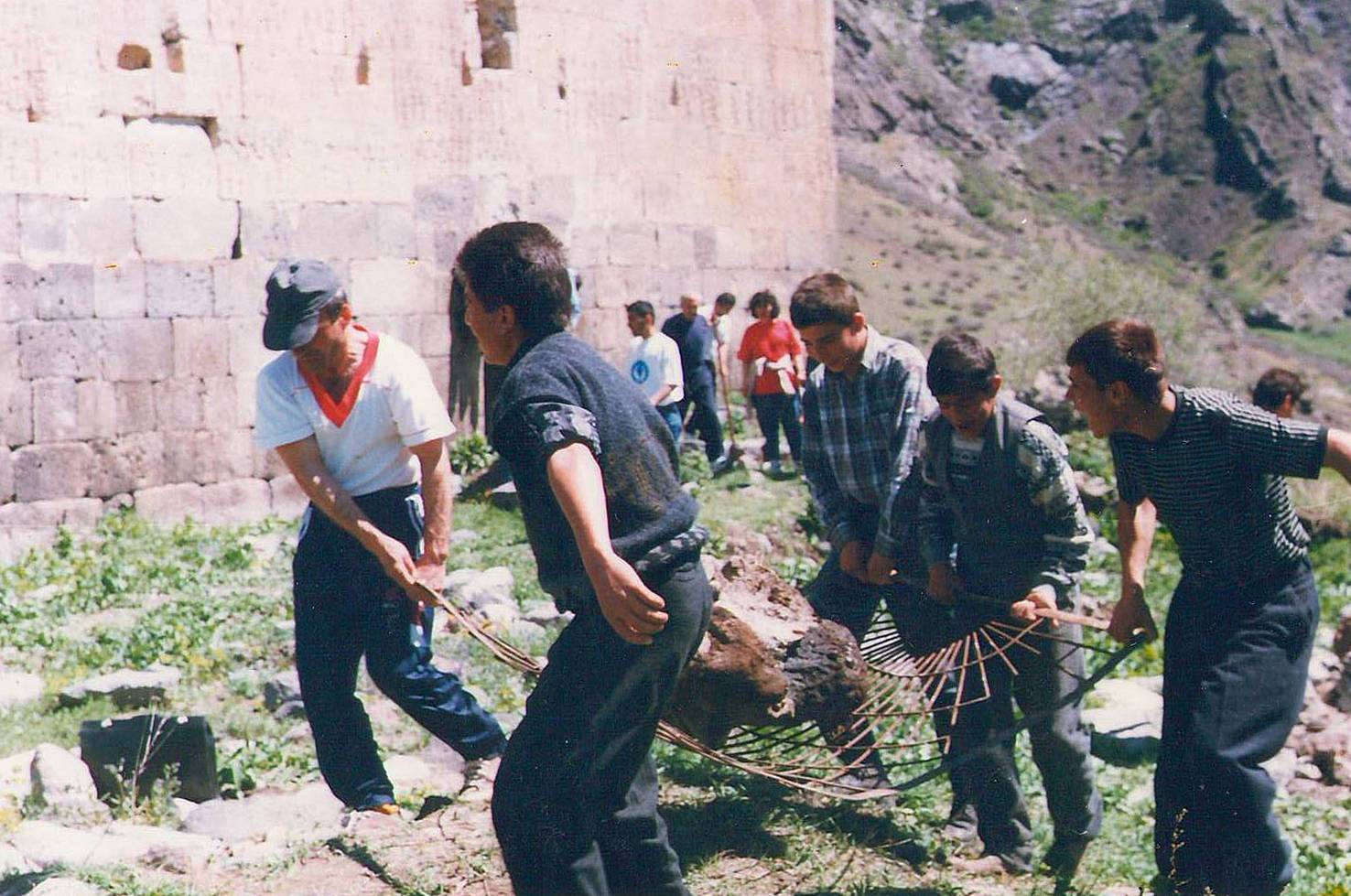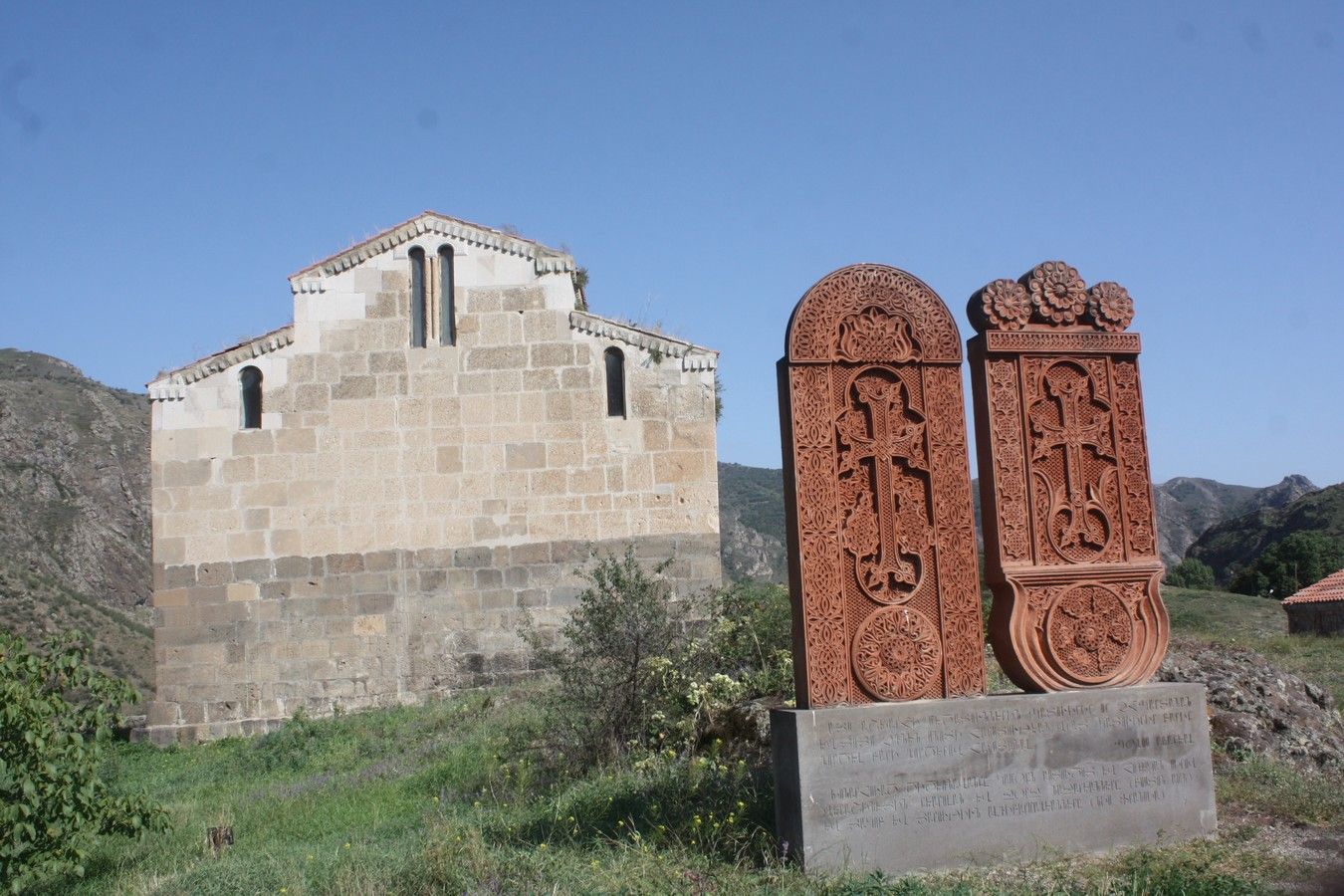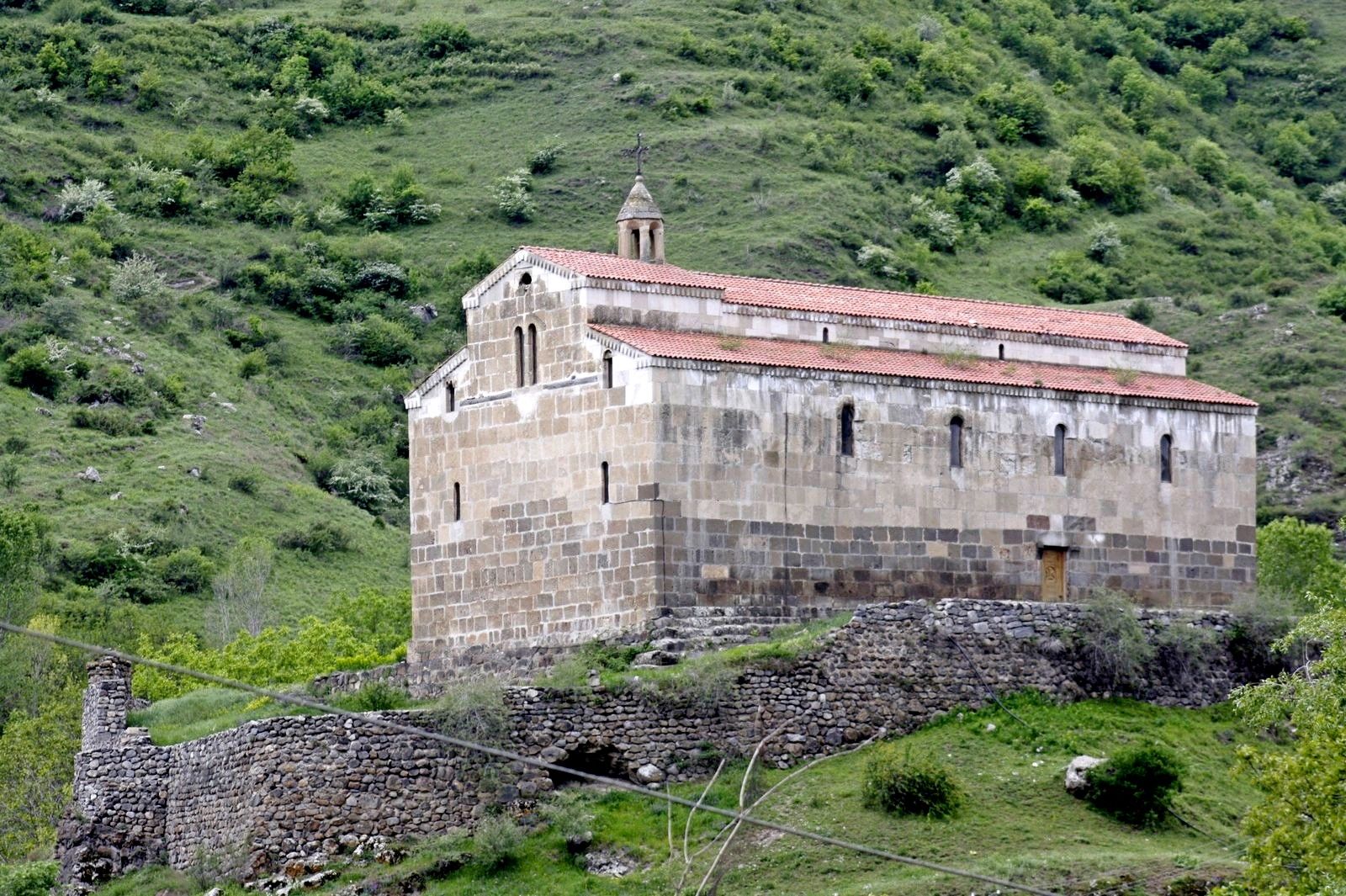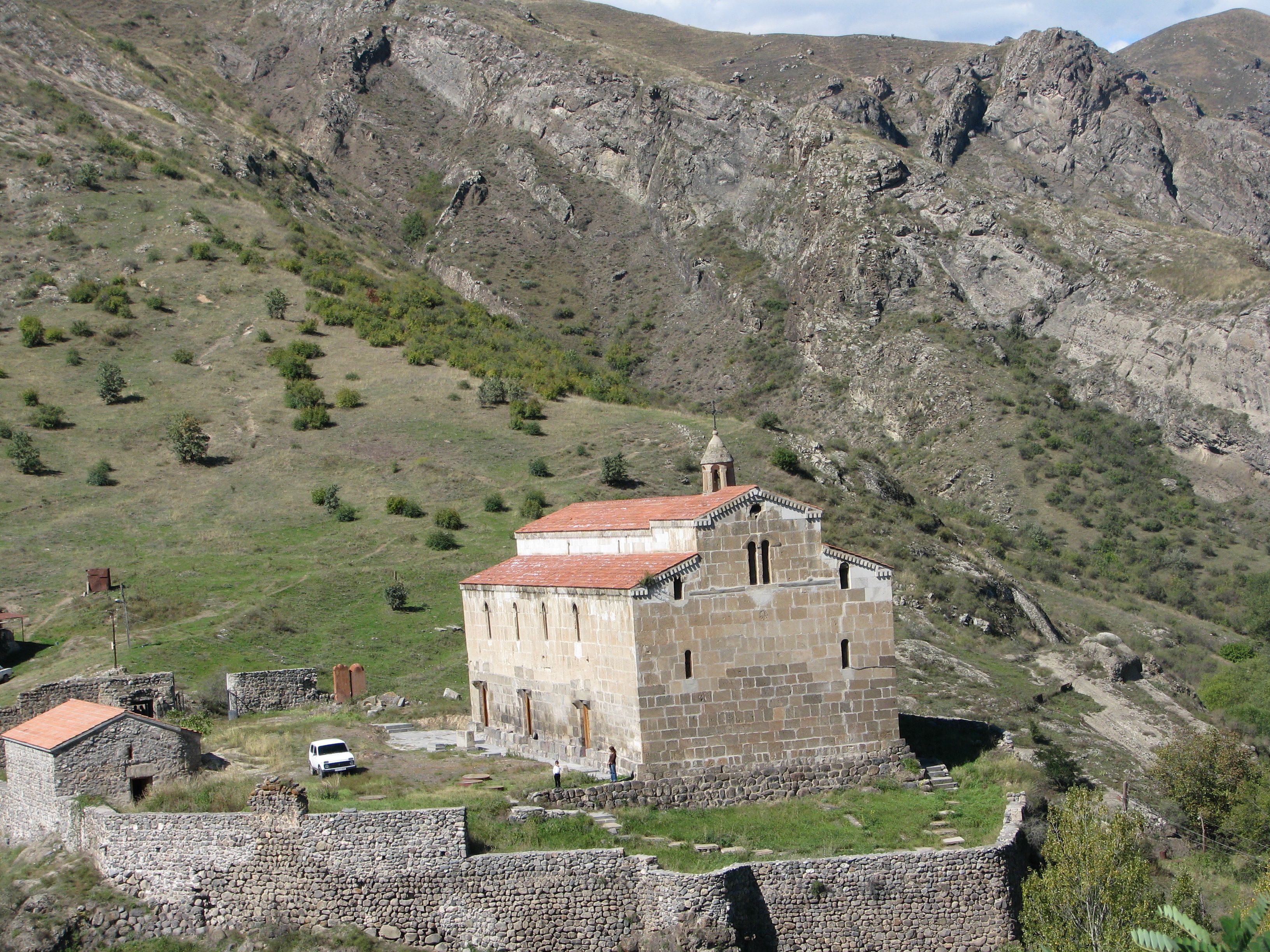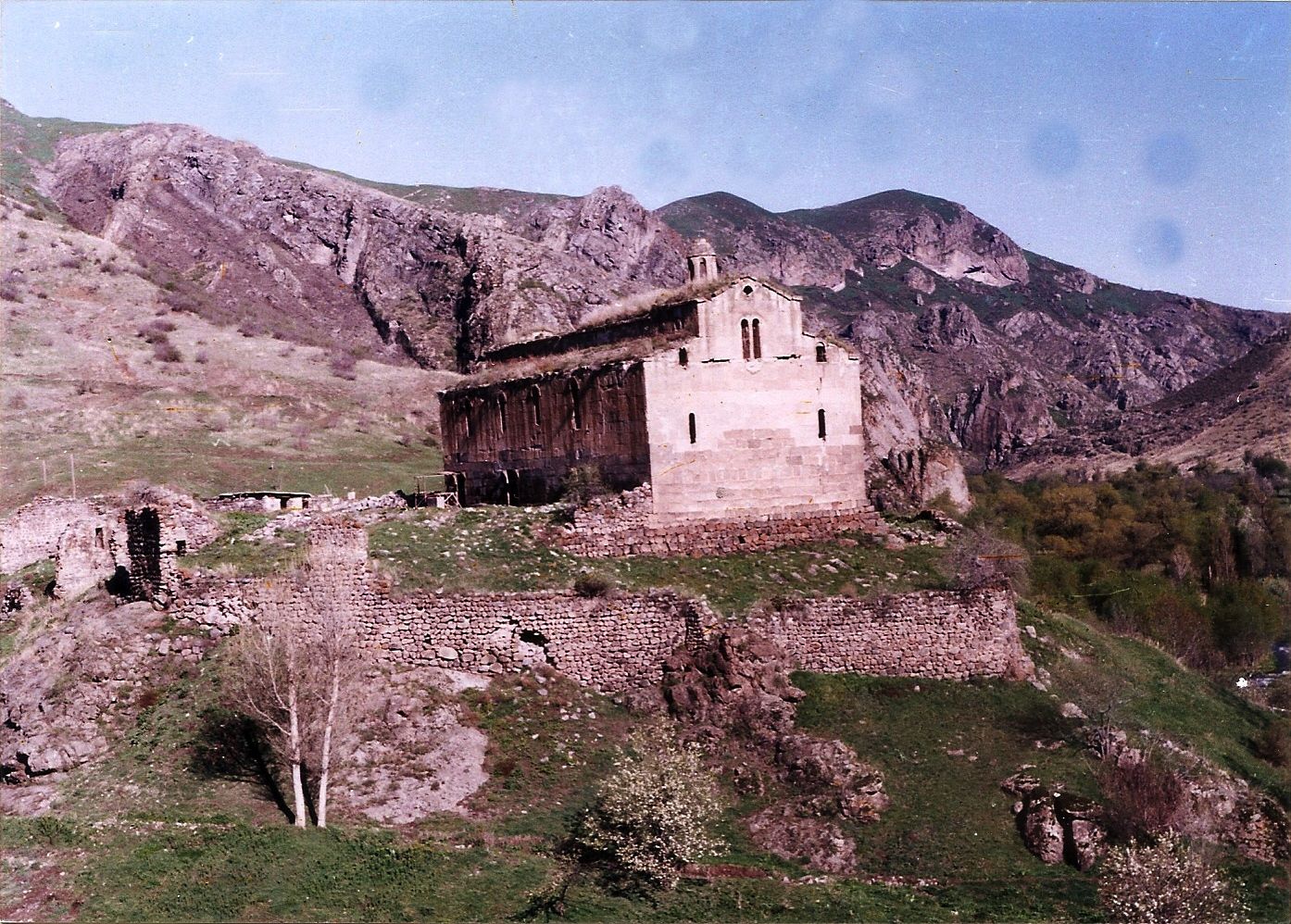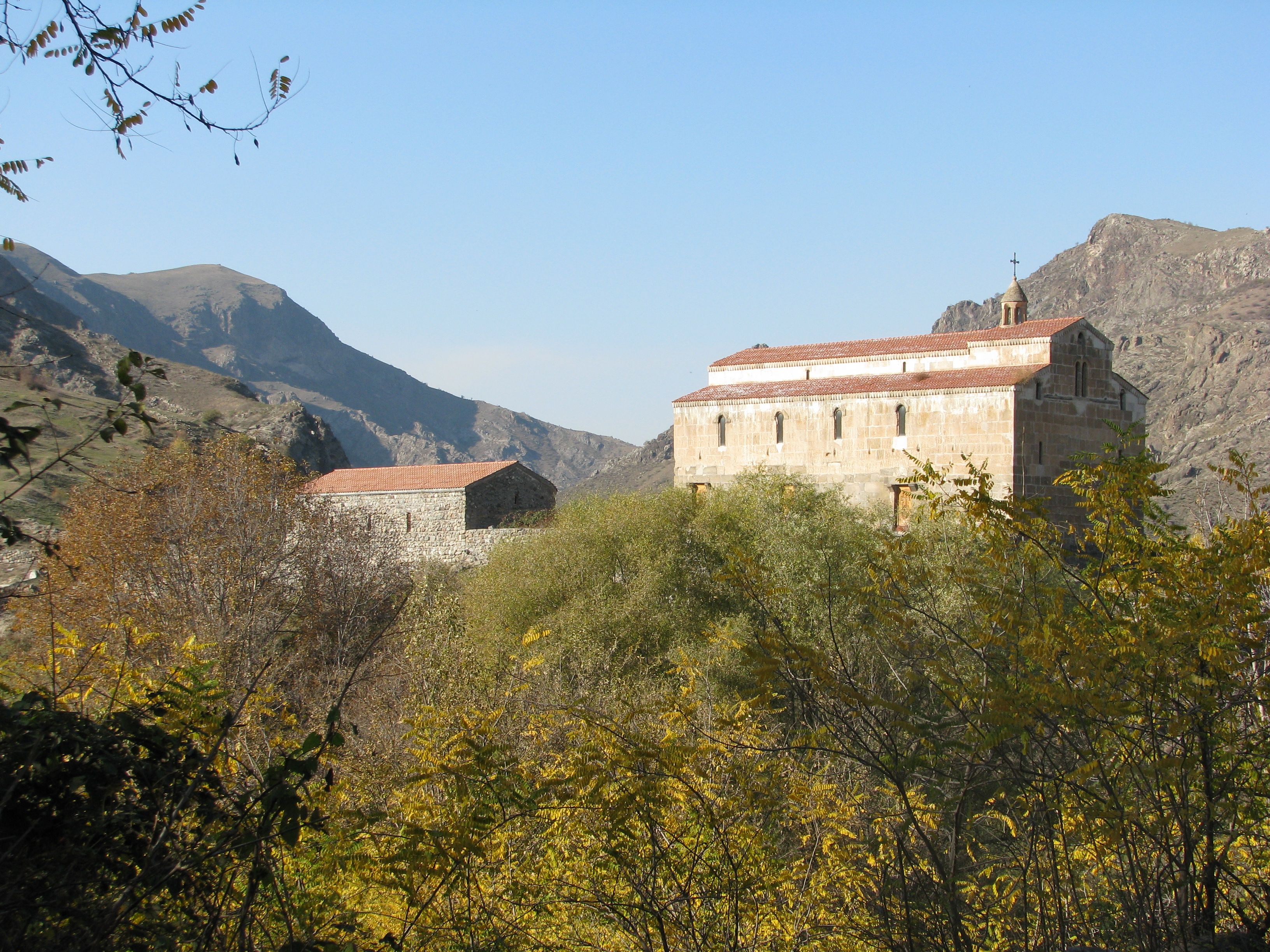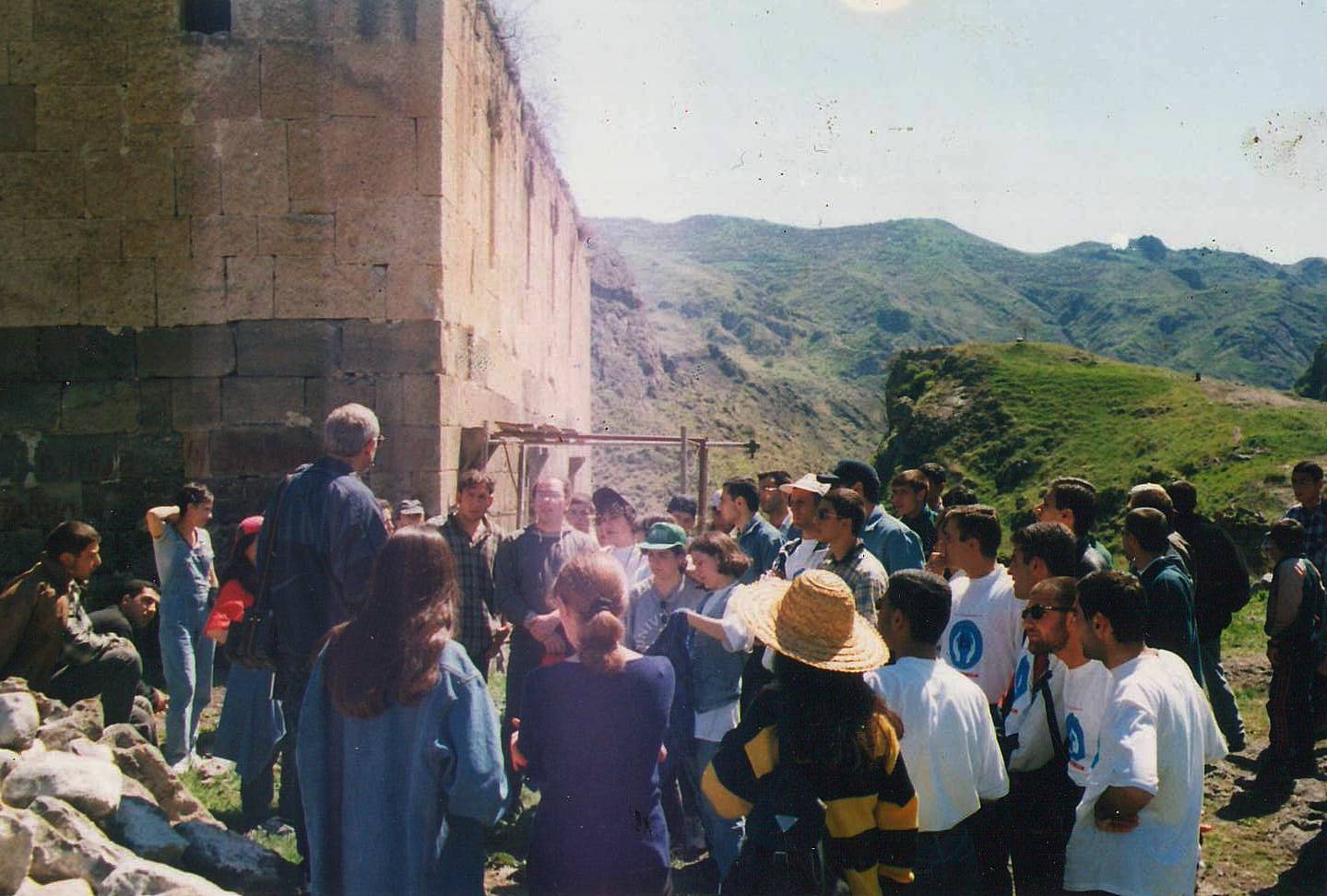In the early middle century, Tsitsernavank, located in the Aghahejk province, was a renowned sanctuary housing a St. Gevorg basilica three-nave temple. Different researchers, including Morus Hasratyan (1903-1979), suggest that the temple's roots can be traced back to a pagan temple dedicated to the Astghik Goddess. There are indications that walls from the pagan period might have been preserved. Morus Hasratyan, a historian, initiated excavations in Tsitsernavank during his student years in the 1940s. His research continued into the 1960s, exploring the secrets of ancient monuments with his students. However, during this period, the monastery was partially destroyed, with stones and debris scattered within. Access to the territory was prohibited in the 1960s. The village of Tsitsernavank is situated in the Aghahechk-Kashatagh province of the Syunik region of Great Hayq, nestled in a canyon on the right bank of the Aghavno River. About 1 km south of the village, the partially standing residence of the powerful Melikakan Haykazyan house in the Aghahechk-Kashatagh province has been preserved. In the village of Tsitsernavank, on a cape where the Khoznavar stream of Aghavno flows, the monastery complex with the St. Gevorg temple has stood for centuries. After the liberation of Aghavno Valley in 1993, Tsitsernavank's historical village was repopulated by Armenians. The sanctuary, dating back to the 1600s, stood half destroyed. From 1998 to 2000, excavations took place in the courtyard of the monastery complex. The area was cleared of stones and debris, the church underwent thorough repairs, and the destroyed refectory (inside dimensions: 13.75 meters x 4.25 meters) was rebuilt, transforming into a museum to house samples from archaeological excavations. Hakob Simonyan, an archaeologist, led the excavations. The Gurgen Melikyan Multichildren Family Foundation of Kashatagh was one of the sponsors in the construction works of Tsitsernavank. Tsitsernavank is known by various names in history and people's memories, including Crow's Grave, Crow's Coffin, Aghoglan, Tsitsernavank, Tsitsernek Monastery, Tsitsernano Monastery, Tsitsarnakavank, Tsitsernakavank, Holy Monastery of Tsitsernaku, Tsitsran Monastery. Stepanos Orbelian places Tsitsernavank among about 150 monasteries of Syunik, considering it one of the 30 notable ones. However, it's not listed among the leading monasteries of his time (end of the 13th century), ranking 17th. The late midcentury saw Tsitsernavank belonging to the Tatev diocese. According to architectural theories, St. Gevorg was built in the 4th century based on a pagan temple. Architecturally, it shares similarities with temples constructed in the 4th-5th centuries in different provinces of the Greater Hayk, such as Yereruyk in Shirak, Tegh Church in Syunik, Yeghvard in Kotayk, and Ashtarak’s Tsiranovor in Aragatsotn. The temple has a rectangular plan stretching from east to west (external dimensions: 12.5 meters x 25.6 meters) with 4 pairs of gables, externally emphasized by a middle nave. The construction reveals several stages, with the lower part of the outer walls made of hewn basalt (7-8 rows high) dating back to the IV century or earlier. Unique features of the Tsitsernavank basilica include the absence of an entrance on the western front (specific to pagan temples and not characteristic of basilica churches), a vaulted hall above the altar (unique in Armenian architecture), the absence of a window on the stage, and the lack of vaulted arches. In contrast to the moderate exterior facades, the interior boasts rich decorations unique to other Armenian architectural memorials of the early Middle Ages. The pillars are adorned with chess-shaped and double-row indentations, wavy and neck-shaped sculptures, featuring eight-rayed stars drawn in a rectangle. A part of the mural with the image of two saints is preserved on the northern wall. The red paint on some rosettes and capital pillars has endured. On the right-hand pillar in front of the holy altar, a small sculpture depicts a view of a donkey and an olive tree. The name of the temple, Saint Gevorg, is mentioned in the book of Movses Daskhurantsi. According to Alexan Hakobyan, the church mentioned in the part is Tsitsernavank, recounting the burning of the church that St. George was nameless. Several traditions surround the name of Tsitsernavank, with one associated with the crow bird. According to tradition, while cooking for the church builders, a snake fell into the pot. A crow flying from above threw itself into the boiling pot upon seeing this. The cooks, upon discovering the snake's body, realized that the self-sacrificing bird saved their lives. The bird was buried in a rock on the west side of the church, called Crow Stone. The monastery complex is also known as Crow's Grave and Crow's Coffin. On the western side of the monastery, a rock known as Agravakar has been named for centuries. A unique bas-relief of three snakes on one of the northern pillars of the central nave possibly formed the basis of this tradition. Crow worship may have existed in Agahechk-Kashatagh for a long time, with the word "Kash" meaning "crow" in Syunik, Artsakh dialects. Another opinion suggests that the little finger of the apostle Peter is buried in the monastery, leading to the name Tsitsernavank. In one medieval chronicle, Tsitsernavank is called Matnevank-Finger temple, aligning with the myth of the saint's finger being buried here. In 1655, Tovma Vanandetsi, an abbot, bishop, and publisher of St. Khach Monastery from the Goghtn province of Nakhichevan, mentions Tsitsernavank in his poem dedicated to the famous holy places of Armenia, highlighting its "great past." The Saint Gevorg Cathedral has 3 entrances and 4 windows from the south, one entrance and 4 windows from the north, and 2 windows from the depositories adjacent to the Holy Altar on the east side. Additionally, 2 narrow windows open from the second floor of the Holy Tabernacle.
Recommended by Metaport
